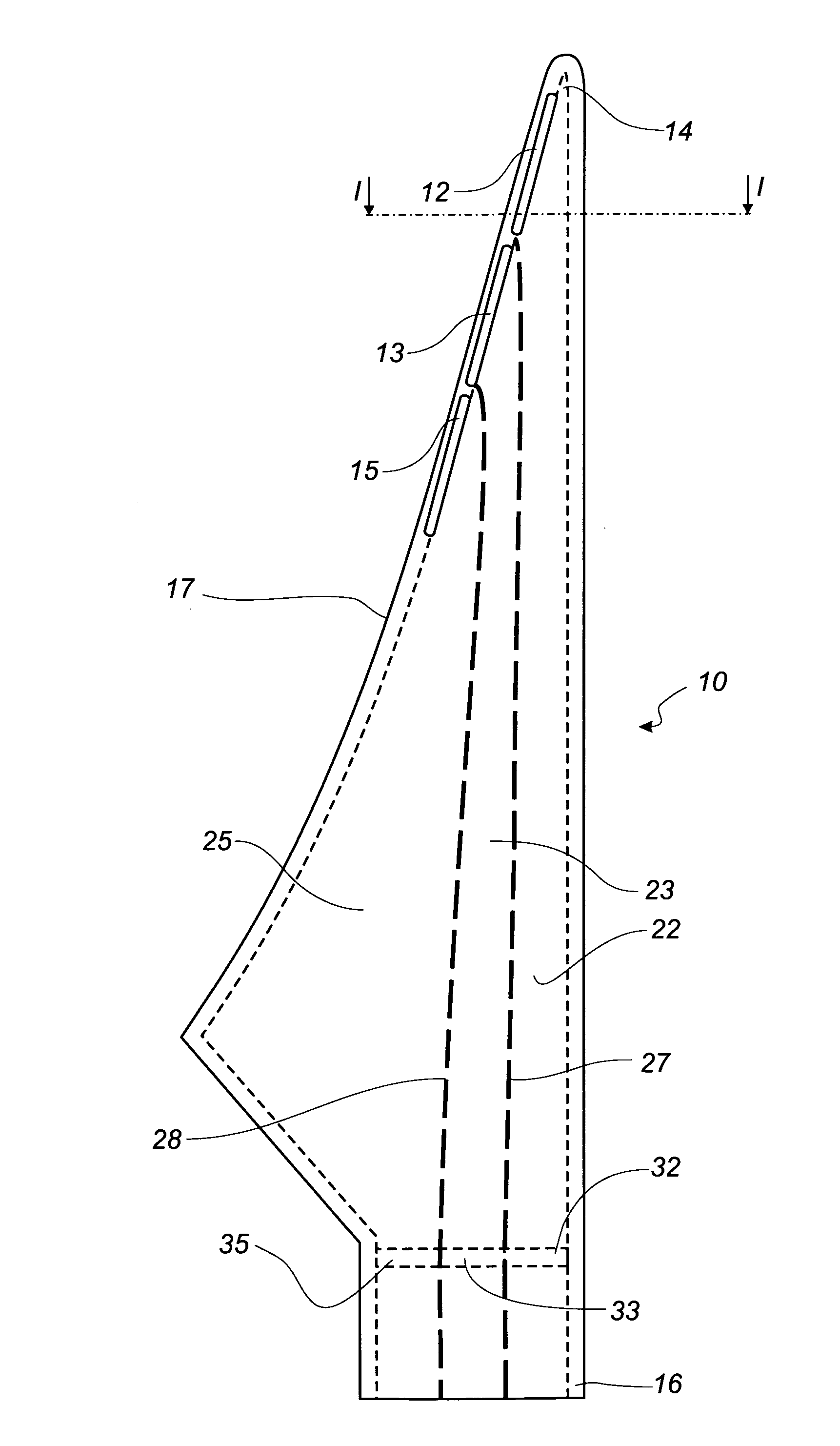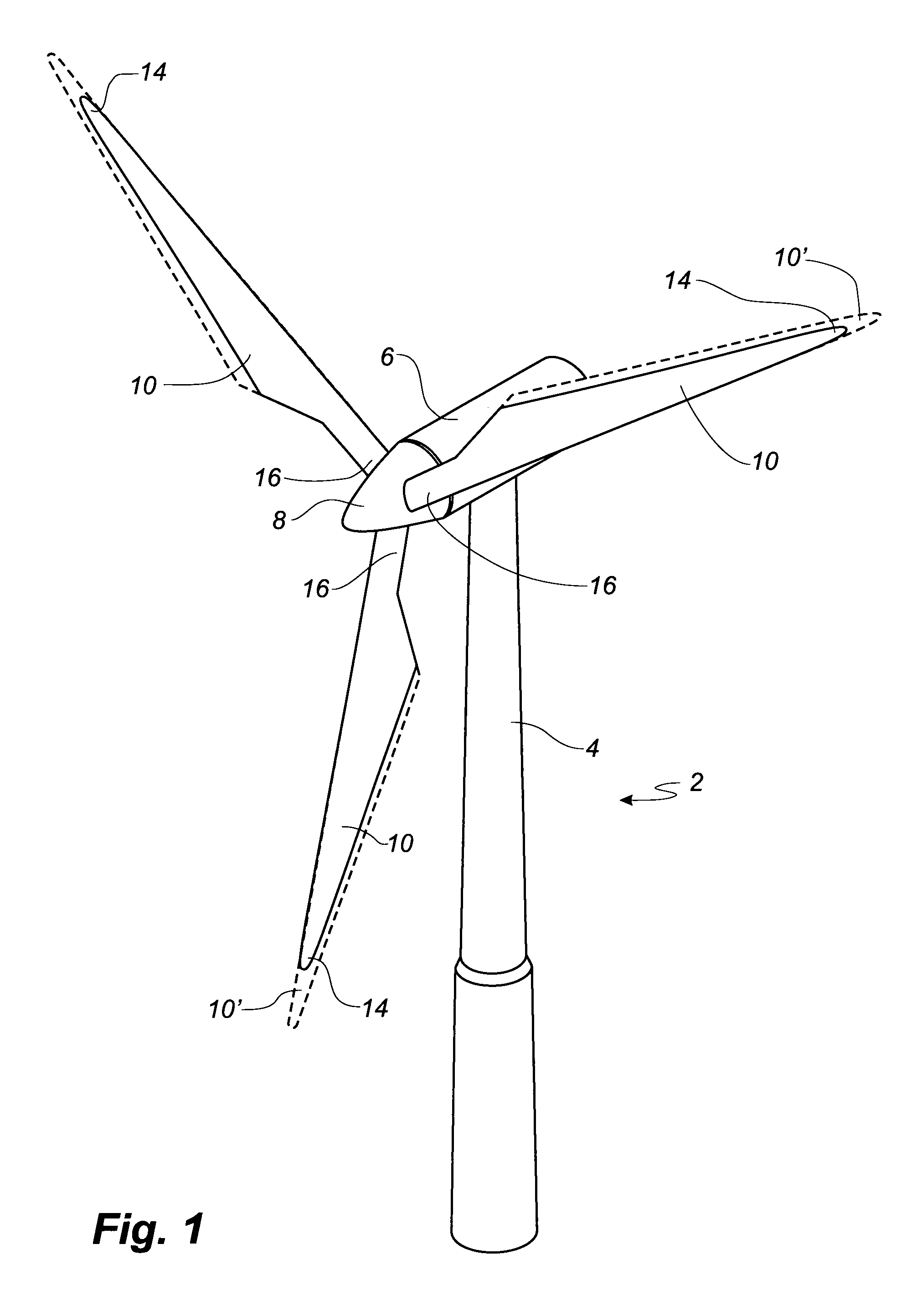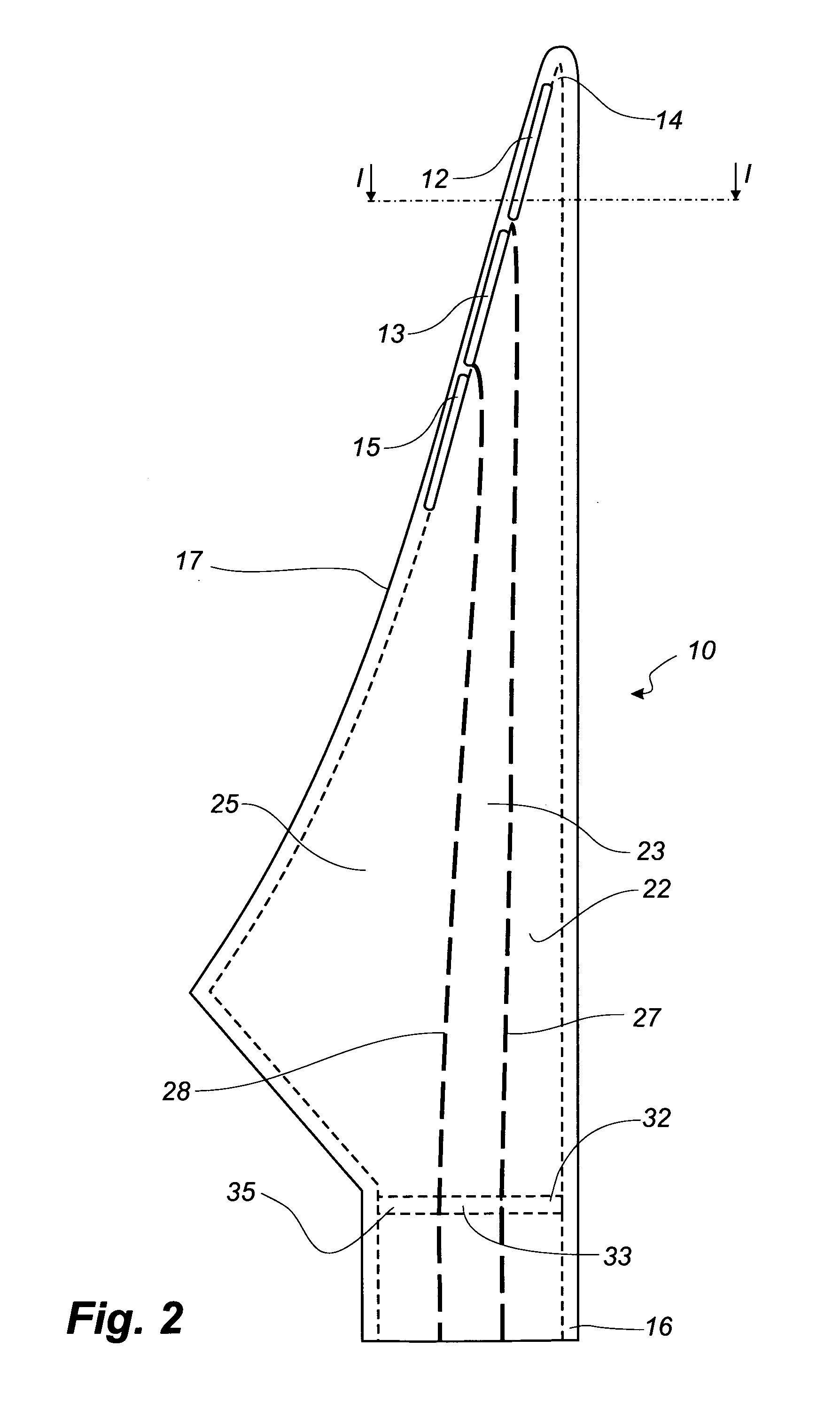Wind turbine blade with lift-regulating means in form of slots or holes
a technology of lift-regulating means and wind turbine blades, which is applied in the direction of engine control parameters, propellers, engine fuctions, etc., can solve the problems of not being able to adapt hydraulics to fast and almost instantaneous movements, and the adjustment cannot be particularly fast, so as to enhance the adjustment of the wind turbine. , the effect of improving the regulating properties
- Summary
- Abstract
- Description
- Claims
- Application Information
AI Technical Summary
Benefits of technology
Problems solved by technology
Method used
Image
Examples
first embodiment
[0044]FIG. 2 shows a schematic view of a wind turbine blade according to the invention. The blade 10 comprises three elongated slots 12, 13, 15. A first slot 12 is placed near the tip 14 of the blade. The first slot is connected to a first internal cavity 22 or first air reservoir, which thereby can communicate with the exterior of the blade. A first valve means 32 is arranged within the first cavity 22. A second slot 13 is placed adjacent the first slot 12. The second slot 13 is connected to a second internal cavity 23 or second air reservoir, which thereby can communicate with the exterior of the blade. A second valve means 33 is arranged within the second cavity 23. A third slot 15 is placed adjacent the third slot 15. The third slot 15 is connected to a third internal cavity 25 or third air reservoir, which thereby can communicate with the exterior of the blade. A third valve means 35 is arranged within the third cavity 25. The first 22 and the second 23 cavity are separated by ...
third embodiment
[0051]FIG. 5 shows a blade 10′″ according to the invention. Instead of slots, the lift-regulating means are formed by groups of holes 42, 43, 45, 52, 53, 55, so that a first longitudinally extending zone comprises a group of first holes 42 and a group of second holes 52, a second longitudinally extending zone comprises a group of first holes 43 and a group of second holes 53, and a third longitudinally extending zone comprises a group of first holes 45 and a group of second holes 55.
[0052]The first groups of holes and second groups of holes can be connected to separate air reservoirs or tubes. Thereby, it is possible to reduce the lift to a first setting by emitting air through the first group of holes, reduce the lift to a second setting by emitting air through the second group of holes, and to a third setting by emitting air through both group of holes. Thus, it is possible to reduce the lift gradually in the different longitudinally extending zones.
[0053]However, the groups of ho...
PUM
 Login to View More
Login to View More Abstract
Description
Claims
Application Information
 Login to View More
Login to View More - R&D
- Intellectual Property
- Life Sciences
- Materials
- Tech Scout
- Unparalleled Data Quality
- Higher Quality Content
- 60% Fewer Hallucinations
Browse by: Latest US Patents, China's latest patents, Technical Efficacy Thesaurus, Application Domain, Technology Topic, Popular Technical Reports.
© 2025 PatSnap. All rights reserved.Legal|Privacy policy|Modern Slavery Act Transparency Statement|Sitemap|About US| Contact US: help@patsnap.com



